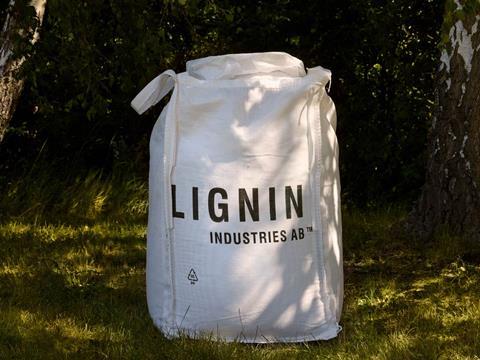
Swedish greentech company Lignin Industries recently announced the commercialisation of its Renol solution – a bio-based material developed from lignin, often found in trees. To learn more about the material and its potential applications, we spoke with the company’s CEO, Fredrik Malmfors.
Could you give us an introduction to your Renol technology? What are its key attributes and what kinds of end-use is it best suited to?
After five years of research and development, we created our patented technology, Renol. It is a bio-based material developed from lignin, and a sustainable alternative to the fossil-based materials that currently dominate the plastic industry.
Renol has industrial uses such as Acrylonitrile Butadiene Styrene (ABS), Polyethylene (PE), and Polypropylene (PP); which encompasses domestic goods, automotive, consumer electronics, and PE films among other applications.
It can be used to make everything from shopping bags to smartphones to car parts. Once a product containing our Renol reaches end of life, it is recyclable in standard recycling processes.
What exactly is lignin? How do you produce it, and what are its key properties?
Lignin is the second most abundant organic material on Earth after cellulose, available at hundreds of millions of tons yearly. Lignin is predominantly found in trees, grass and straw and typically discarded as waste by the forestry and agricultural industries.
Using our proprietary method, we mix lignin with bio-oil to convert it into our product Renol. This process repurposes one of the chief constituents of wood into a valuable bio-based material.
Could you give us some insights into the five-year R&D process behind the launch of this product? What were some of the key hurdles that had to be overcome?
One of the main challenges has been to create a material that makes it easy for the plastic industry to do its necessary green transition. Many bio-based options are hard to process, but we have managed to meet standard processing criteria which has been a true game changer.
Another significant achievement is the versatility of Renol as it can be used in various types of plastics, unlike other bio-based materials that are typically designed for specific applications. One other hurdle to overcome has been the natural brown colour of lignin but when working directly with brand owners, this has been seen as a positive differentiator since it gives many products a sustainable look and feel.
How does this product compare to conventional alternatives in terms of CO2 emissions, and is it recyclable?
Renol replaces between 15-40% of the fossil oil as a raw material and can be mixed with virgin, recycled, or other bio-based materials to create products with considerably lower carbon emissions. It serves as a genuine alternative to fossil-based plastics, boasting very low CO2 emissions with a carbon footprint (LCA cradle-to-gate) of -1.9 kg CO2/kg.
Renol is also highly stable during recycling, retaining its properties over multiple recycling cycles. Furthermore, our raw material lignin is sourced from sustainably managed forests in northern Europe, which boosts its environmental credentials.
The next step is for Lignin Industries to prove that this solution can be viable at commercial scale. How do you plan to make this happen?
We operate a factory just outside of Stockholm, where we produce the Renol. Given the abundant availability of lignin, our solution is highly scalable. Initial scaling beyond our current capacity will be done in collaboration with external production partners. We can supply Renol at the scale and cost required to maintain a competitive edge in the industrial market.
If you liked this story, you might also enjoy:
How are the top brands progressing on packaging sustainability?
Sustainable Innovation Report 2024: Current trends and future priorities
Reuse vs. single use – which is better for the environment?
The ultimate guide to global plastic sustainability regulation


















No comments yet